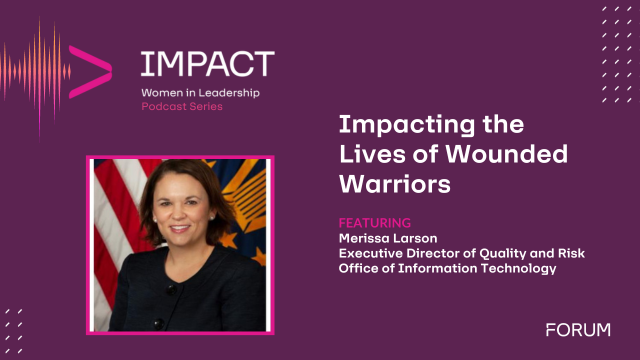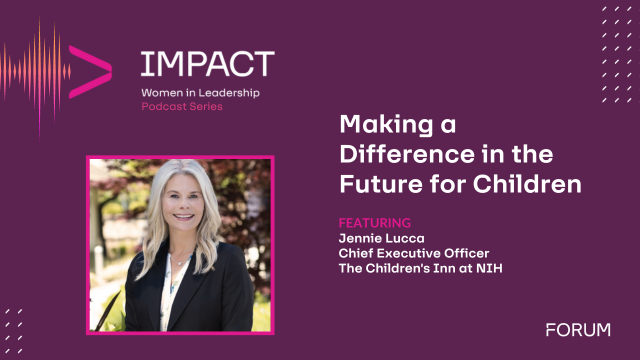This interview with Dan McCune, Executive Director of Software Product Management at the U.S. Department of Veterans Affairs, looks at the Agency’s forward movement supporting citizen development, customer experience, and redefining success.
The Pillared Challenge
Many traditional IT organizations are challenged with a pillared or siloed model in which development and operations are disconnected. This leads to developers working to push out projects and then just throwing them over the wall to operations teams to figure out how to use, modify and correct those solutions.
This also creates a gap in knowledge transfer between the developer who has spent time with the customer to understand their business requirement and leads to operations teams then veering away from that purpose as they fix bugs or continue evolution work on an application without that same context. In the end, this creates fragility over time.
This pillared approach also creates a customer experience challenge because the customer may have multiple projects in development and therefore may be engaging with multiple IT teams as each works on a different solution.
On the development side, there is the added challenge of resource management that is created when teams have to pause and ramp up again whenever a team member changes.
VA’s Approach to Forward Movement
Within the Department of Veterans Affairs, our approach has shifted from a project to product view, and moved to DevOps, all as part of an overall modernization strategy.
Combining multiple projects under a product line management view we are able to coordinate efforts, bringing multiple initiatives under one umbrella. This has brought nearly 1,000 projects under 32 product lines. It also helped us build longer lasting teams that own products from cradle to grave and optimize our use of resources.
Customer Experience
Under the product line model, we are able to group products that mirror customer needs and improve the overall customer experience because there is a single point of accountability. The creation of a self-sufficient team that stays together and is accountable to the customer helps enforce a strong relationship and creates an effective and dedicated team effort.
The GI Bill is a great example of this effort. Under the old model we had 26 different projects and six supporting teams. There were integration challenges and we struggled to keep up with the velocity of the customer.
Rolling all of the projects under one product line was transformational. Not only was the overall customer experience improved but we were able to increase our velocity and better match the speed of the customer.
We understand now that we need to change our view of success, to use the same measuring stick as the customer, understanding their business model to ensure we are delivering success for them.
Redefining Success
Based on that model and the success we have seen, we are taking that long-term approach and view towards better delivery and replicating this across the organization.
Traditionally the measure for development teams is scope, schedule and cost. Historically we found that teams might be meeting these metrics but on the customer side, efforts failed.
As an example, Government does a lot of claims processing and one measure of success is the efficiency of a single claims processor. If we are adding automation so that person can do more and do it well, their efficiency should improve, and that is how the team should measure success – our business outcome. Our teams are now focused on delivering business value, rather than focusing on scope, schedule and cost, which can be disconnected from what the customer actually needs.
Going back to the GI Bill we were able to increase claims processing under the new model, and with this new view, by 50 percent in one year. We are seeing similar results for other products.
The COVID Push
The COVID pandemic provided a reason for us to put this methodology to the test. We had to be faster at releasing software and quick to pivot as things changed on the business side for the organization. We were able to respond quickly because of some of the new capabilities that we had developed around product lines.
Instead of what had been a traditional timeline of 584 days on average to field new systems, we were releasing solutions within weeks, sometimes days, in order to meet those urgent demands.
Citizen Development
One thing that is becoming more common is the IT capabilities and knowledge of the customer. More and more we are seeing customers buying their own SaaS solutions. That changes our role a bit, taking us from developer to trusted partner, providing advice and intel to ensure the new solutions are secure and can integrate with our enterprise data sources.
This citizen development model also requires us to ensure these new solutions, and anything developed in the future, will become good citizens of the network, maintaining the cyber posture that has been set and is required. That is a different role from what we have been used to and we expect there will be natural growing pains as we recalibrate our role in IT.
Governance and Scale
Automation is taking place at a speed that is hard to control but that is exactly where we need to focus. The customer is buying more so there needs to be more and different governance to ensure they are not buying duplicate solutions, or a variation of an existing solution over again, or buying solutions that create security risk.
VA is a Fortune 100 sized IT organization with nearly one million people on the network. That is a staggering scale. Our software catalog has grown by 16 percent a year, but staff and budget remain stagnant. Under the old model we operated very much as a software development organization with a snowflake culture, thinking every use case was unique to VA – highly differentiated – and required a custom solution. We simply do not have the capacity to write custom code applications for every automation need, so we have to change our model, our identity, all while ensuring security and integration.
This forward-thinking approach, considering scale, effectiveness, security, and the business model, will continue to be a critical evolution and a focus of the months and years ahead.
About Dan McCune
 Dan McCune oversees software development and portfolio, program, and project management of IT projects for the Department of Veterans Affairs (VA) Office of Information and Technology (OIT). Dan has the privilege of directing the development and delivery of software solutions that ultimately benefit the more than nine million Veterans who are actively enrolled in VA services. These software solutions help VA provide high quality, accessible health care and play an instrumental behind-the-scenes role in helping Veterans and their families buy homes, earn degrees, start careers, and receive relief during hardships like the pandemic. Under his guidance, IT teams also support VA’s burial and memorial services and provide innovative ways to honor our Veterans, allowing surviving family members, friends, and others to memorialize their service to our nation.
Dan McCune oversees software development and portfolio, program, and project management of IT projects for the Department of Veterans Affairs (VA) Office of Information and Technology (OIT). Dan has the privilege of directing the development and delivery of software solutions that ultimately benefit the more than nine million Veterans who are actively enrolled in VA services. These software solutions help VA provide high quality, accessible health care and play an instrumental behind-the-scenes role in helping Veterans and their families buy homes, earn degrees, start careers, and receive relief during hardships like the pandemic. Under his guidance, IT teams also support VA’s burial and memorial services and provide innovative ways to honor our Veterans, allowing surviving family members, friends, and others to memorialize their service to our nation.
Additional articles from this year’s edition are available here.












